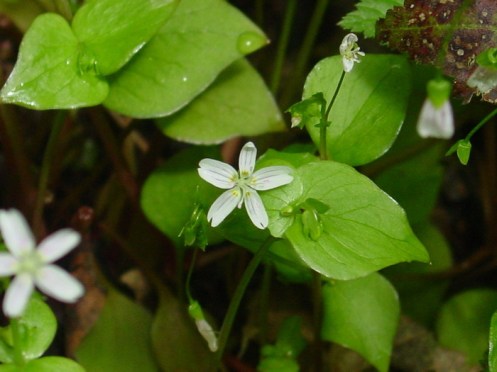Herb Robert (Geranium robertianum) also called Death come quickly, Red Robin, Stinking Bob
Geranium: genus of flowering annual or perennial plants, also known as cranesbills
Robertianum: ?
So, Herb Robert. Where to begin? This pretty little annual wildflower is a member of the Geranium family, and it's extremely common in Oregon. At first glance I thought it was a bleeding heart, until I saw the flowers, which were pink but pedestrian, with 5 petals each. It supposedly has an unpleasant smell (hence the nickname "stinking bob") although I can't say I've noticed it. It has medicinal uses, such as repelling mosquitoes and alleviating coughs, all things I don't find very interesting, so I won't go into them here.
First thing I found out was that it's non-native - in fact it's considered to be an invasive species on the West Coast. It's hard to imagine that such a delicate looking plant would be a pest! When I took this photo last weekend, I will say that it was growing everywhere, and seemed to be crowding out the other woodland plants in some places.
I also discovered that no one seems to really know where the "Robert" name came from, only that the name has been around since at least the middle ages. Some folks think it refers to Saint Robert Belllarmine, who was an Italian Cardinal in the 16th century. Early in his career, Saint Robert was given the job of Inquisitor and had an unlucky astronomer named Giordano Bruno burned at the stake, simply because he had the audacity to say that the sun was a star. In the same vein, Robert was the cardinal who told Galileo to abandon the Copernican doctrine, which theorized that the earth revolved around the sun instead of the other way around, While these things are interesting to theologians, and appropriately ridiculed by scientists, it doesn't strike me as a great reason to name a plant after someone - or to grant them Sainthood for that matter. But I digress.
Another theory I read about, and which I like far better, is that Robert is actually a reference to Robin Goodfellow, a mischievous imp who served as an emissary of the Fairy King Oberon. Shakespeare referred to him as "Puck" and made him the primary instigator in his comedy A Midsummers Night's Dream. Puck could occasionally do small favors for people he liked, but was mainly known for causing trouble such as tricking people into getting lost in the woods, or skimming the cream off of milk.
Considering that Herb Robert is found in woodland settings, is small and delicate, but at the same time infamous for causing problems, like crowding out native plants and infuriating gardeners, I think it's an apt comparison.
Considering that Herb Robert is found in woodland settings, is small and delicate, but at the same time infamous for causing problems, like crowding out native plants and infuriating gardeners, I think it's an apt comparison.



